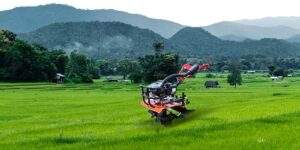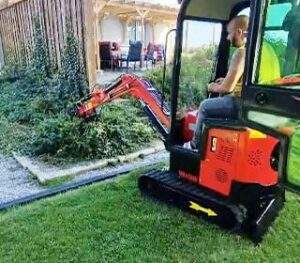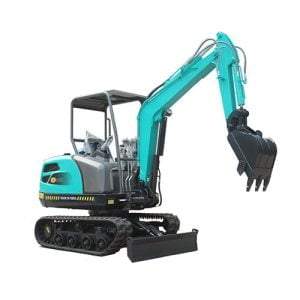Walking Tractors Unveiled: Revolutionizing Agricultural Practices
Introduction
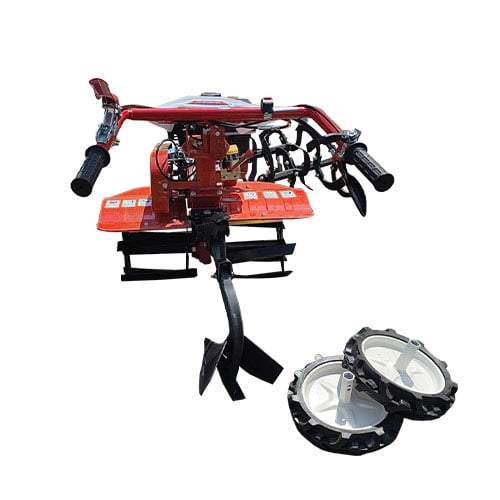
In the realm of agriculture, innovation plays a pivotal role in enhancing productivity, efficiency, and sustainability. Walking tractors, also known as power tillers or hand tractors, have emerged as transformative tools, revolutionizing agricultural practices worldwide. These versatile machines offer a multitude of benefits that cater to the diverse needs of small-scale and medium-scale farmers.
Features of Walking Tractors
Walk-behind tractors are characterized by their compact design, maneuverability, and adaptability to various terrains. Their key features include:
- Compact Size: Walking tractors are relatively small and lightweight, making them ideal for small-scale farms and confined spaces.
- Maneuverability: The compact size and articulated steering allow for easy maneuverability in tight spaces and around obstacles.
- Versatility: Walking tractors can be equipped with a wide range of attachments, enabling them to perform multiple tasks, from tillage to harvesting.
- Affordability: Compared to larger tractors, walking tractors are more affordable, making them accessible to a wider range of farmers.
- Fuel Efficiency: Walking tractors typically operate on diesel or gasoline and offer good fuel efficiency, reducing operational costs.
Advantages
Walk-behind tractors offer numerous advantages that make them a valuable asset to farmers:
- Increased Productivity: Walking tractors can significantly increase productivity by automating tasks that were previously done manually, reducing labor costs and saving time.
- Improved Soil Quality: Walking tractors can effectively till, cultivate, and prepare the soil for planting, improving soil structure and fertility.
- Enhanced Crop Yields: By enabling timely and efficient land preparation, planting, and harvesting, walking tractors can contribute to increased crop yields.
- Reduced Soil Erosion: Walking tractors can minimize soil erosion by promoting soil conservation practices, such as mulching and contour farming.
- Versatility for Diverse Tasks: Walking tractors can perform a wide range of tasks, including tillage, planting, harvesting, weeding, and transporting agricultural products.
Applications
Walk-behind tractors find diverse applications in various agricultural settings:
- Small-Scale Farming: Walk-behind tractors are particularly well-suited for small-scale farms, where larger tractors may be impractical or unaffordable.
- Rice Cultivation: Walk-behind tractors play a crucial role in rice cultivation, from land preparation and planting to harvesting and threshing.
- Vegetable Farming: Walk-behind tractors are widely used in vegetable farming for tasks like tillage, weeding, and harvesting.
- Orchard Maintenance: Walk-behind tractors can be employed in orchard maintenance for tasks like soil cultivation, pruning, and transporting fruits.
- Livestock Operations: Walk-behind tractors can be used for tasks like preparing feed, transporting livestock, and maintaining pastures.
Maintenance Considerations
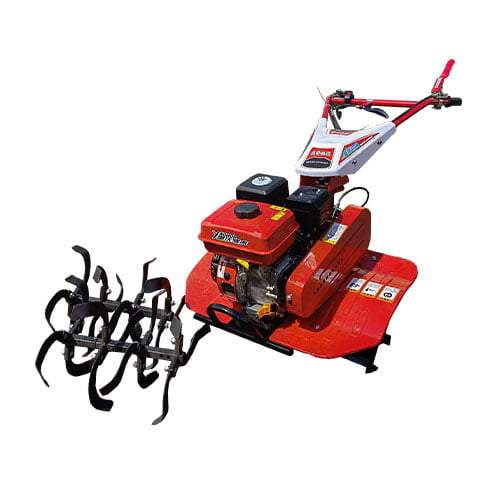
Regular maintenance is essential to keep walk-behind tractors in optimal condition and extend their lifespan:
- Regular Servicing: Follow the manufacturer’s recommended maintenance schedule, including oil changes, filter replacements, and lubrication.
- Inspection and Repairs: Inspect the tractor regularly for signs of wear or damage, and address any issues promptly to prevent breakdowns.
- Proper Storage: Store the tractor in a clean, dry, and protected area to prevent corrosion and damage.
- Operator Training: Ensure that operators are trained in the proper use and maintenance of the tractor to avoid accidents and damage.
Table: Summary of Walking Tractor Features and Advantages
| Feature | Advantage |
|---|---|
| Compact Size | Ideal for small-scale farms and confined spaces |
| Maneuverability | Easy maneuverability in tight spaces and around obstacles |
| Versatility | Equipped with diverse attachments for multiple tasks |
| Affordability | More accessible to a wider range of farmers |
| Fuel Efficiency | Cost-effective operation with good fuel efficiency |
Conclusion
Walking tractors have revolutionized agricultural practices, empowering small-scale and medium-scale farmers to enhance productivity, improve soil quality, and increase crop yields. Their versatility, affordability, and fuel efficiency make them invaluable tools for sustainable agricultural development. As technology continues to advance, we can expect even more innovative features and applications for walking tractors, further transforming the agricultural landscape worldwide.With the integration of smart technology and precision farming techniques, walking tractors are poised to become even more efficient and effective in the years to come. Farmers can look forward to automated systems, data-driven decision-making tools, and remote monitoring capabilities that will optimize their operations and maximize their yields.
FAQ
Are walk-behind tractors suitable for large-scale farming operations?
While walk-behind tractors are primarily designed for small-scale and subsistence farming, they can also be used in conjunction with larger machinery for specific tasks or in areas where space is limited.
What types of attachments are available for walk-behind tractors?
Attachments for walking tractors vary depending on the manufacturer and model but commonly include plows, cultivators, seeders, harrows, and trailers.
Can walking tractors be used for non-agricultural purposes?
Yes, walking tractors have applications beyond agriculture and can be used for tasks such as landscaping, construction, and transportation in certain contexts.
How do walking tractors compare to traditional hand tools for farming?
Walking tractors offer increased efficiency and productivity compared to traditional hand tools, allowing farmers to complete tasks more quickly and with less physical exertion.
What safety precautions should be taken when operating a walking tractor?
Operators should receive proper training on the safe operation of walking tractors and wear appropriate personal protective equipment, such as gloves, boots, and eye protection, when working with machinery and attachments.

